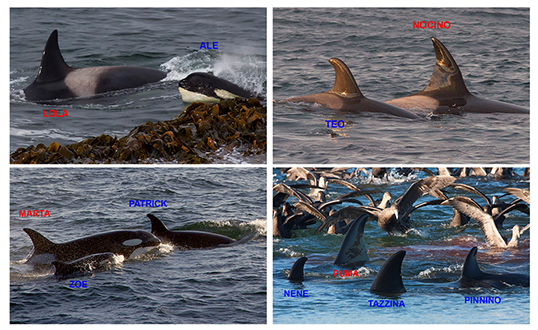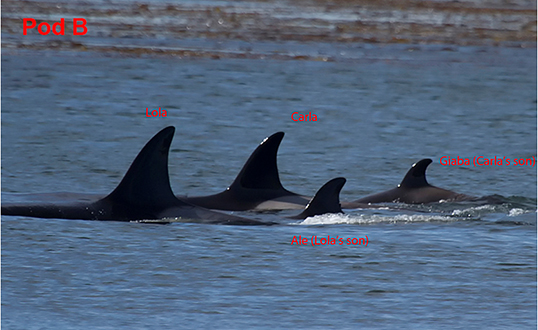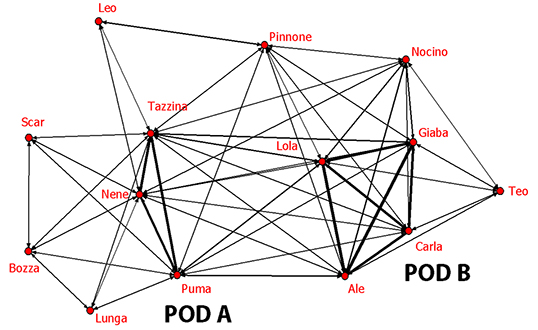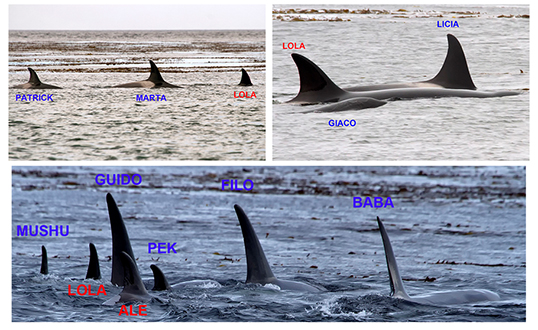Killer whales of Sea Lion Island
Sociality
The basic social unit: mother and calves
Killer whales have a complex, hierarchical social system. The basic social unit of the killer whales is the mother-calves association. Each mother can be associated with one, two or three generations of calves. For example, female Puma is associated with three calves, Giaba, Nene, and Tazzina (increasing age). Tazzina was firstly observed in 2010, so it is now a subadult individual, but it is closely associated to its mother.

A sample of Sea Lion Island mothers (in red) and calves (in blue).
Pods and groups
The higher level of the killer whale social structure is the pod, i.e., a stable association of individuals that include one or more mother-calves units. The pod a in stable in time and space, and its members have long term bonds.

Sea Lion Island pod B, that is the union of three mother-calf pairs, two of which are shown in the picture.
Pods are often observed together, forming groups that on Sea Lion Island can get to a maximum size of 13 individuals. These groups are an example of a fusion-fission society, because they can change in composition along the time. Relationships between pod and group members can be depicted using sociograms, in which the thickness of the connecting lines represents the strength of the bond between the individuals.

A sociogram of Sea Lion Island resident killer whales in November 2013.
The social role of recruiters
Some individual killer whales may have a special role in the social system, either promoting the cohesion of groups, or recruiting new individuals. At Sea Lion Island female Lola is recruiting new individuals. In 2014 all the new individuals that appeared at Sea Lion Island came together with Lola and her calf Ale.

Different groups of new individuals together with Lola and Ale
